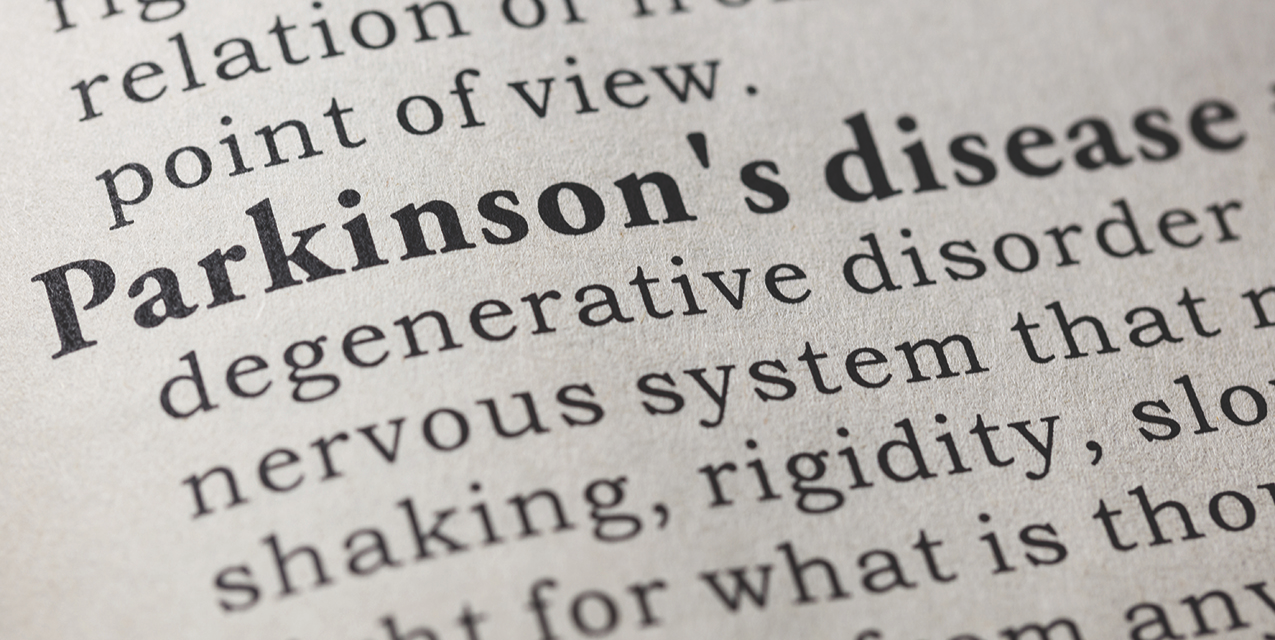Who hasn’t tapped fingers on a desk with anxiety or shook a leg under a table awaiting some sort of news? These motor impulses may seem involuntary, but they are under the control of the individual. For a portion of the population, fidgeting and tremors are out of their control, and hallmarks of a movement disorder called Parkinson’s disease.
Parkinson’s disease (PD), which affects 10 million people worldwide, is a progressive neurodegenerative disorder that predominantly affects the dopamine-producing neurons in an area of the brain called the substantia nigra. Since PD affects the nervous system, various parts of the body controlled by nerves can be impacted by the disease. Symptoms often start slowly and can be virtually undetectable to the average person. explain that an early symptom may be a barely noticeable tremor in just one hand. Stiffness or slowing of movement also can be an early marker of the disease. Some people with PD may begin to have expressionless faces and their speech may become soft or slurred. Symptoms worsen as the condition progresses.
The National Institute of Neurological Disorders and Stroke identified four primary symptoms of PD.
- Tremor: Shaking often begins in a hand, although a foot or the jaw may be initially affected. One characteristic of PD is a rhythmic back-and-forth tremor that may involve the thumb and forefinger and appear as “pill-rolling.” It is most obvious when the hand is at rest.
- Rigidity: Muscle stiffness and resistance to movement affects many people with PD. The muscles remain constantly tense and contracted so that a person aches or feels stiff. This rigidity can become obvious when another person tries to move the individual’s arm, which will only move in short, jerky movements known as “cogwheel.
- Bradykinesia: This is a slowing down of spontaneous and automatic movement, and activities once easily performed now take much longer. There often is a decrease in facial expression, called a “masked face.”
- Postural instability: Impaired balance and change in posture can increase the risk of falls. Postural instability may also affect walking gait. Individuals with PD may appear to be shuffling.
PD’s cause remains unknown, but scientists believe a combination of genetic and environmental factors are at the root of the disease. While there is no cure for PD, treatment options may help alleviate some symptoms. People with PD have brain changes, including clumps of substances called Lewy bodies, which result in a widespread protein called alpha-synuclein that cells can’t break down. Researchers have found alpha-synuclein in the spinal fluid of people who later developed PD.
Physicians have had positive results in PD patients who take dopaminergic medications, which replace missing dopamine in the brain and alleviates symptoms. Researchers are working to find ways to identify biomarkers for PD that can lead to earlier diagnoses and more tailored treatments. Since other conditions can produce symptoms similar to PD, it is important to consult with a neurologist. With the right treatment and support, someone with PD can still live a quality life for years after diagnosis. Learn more at https://www.ninds.nih.gov.












